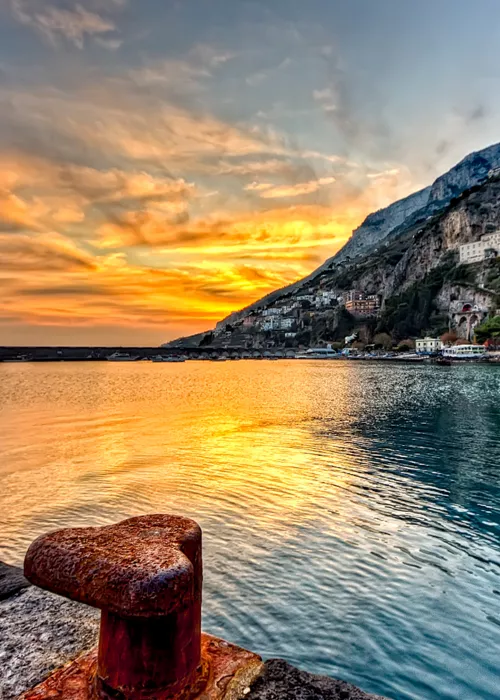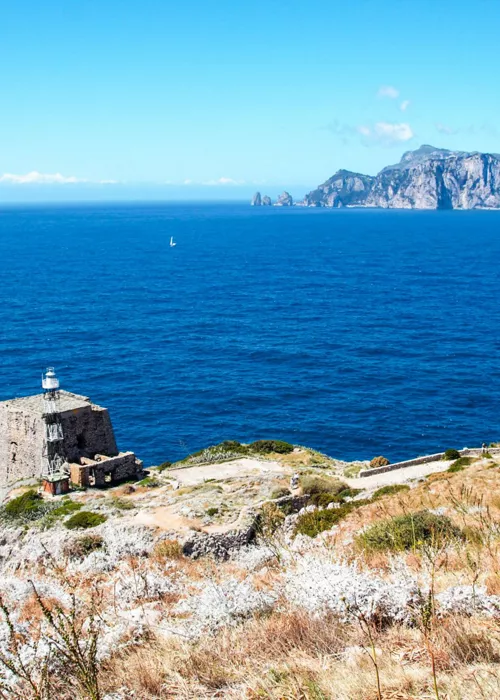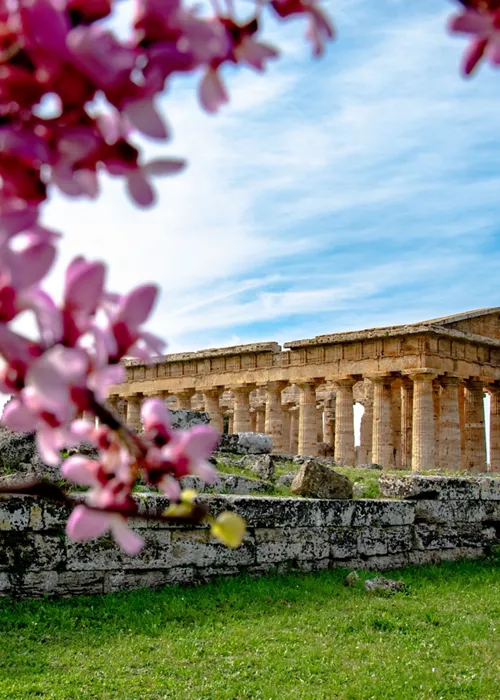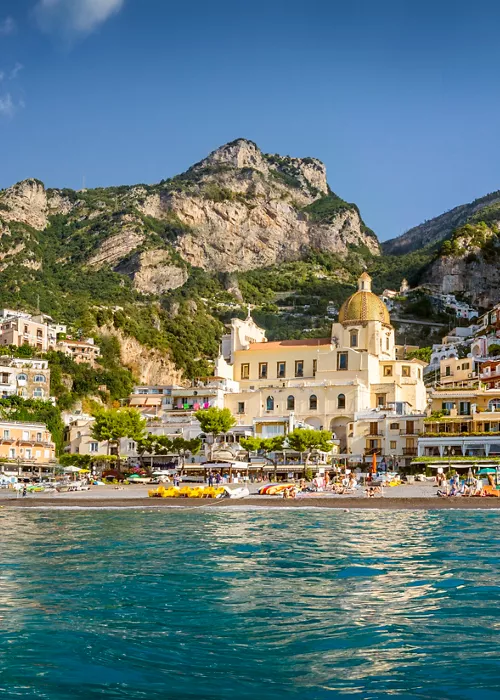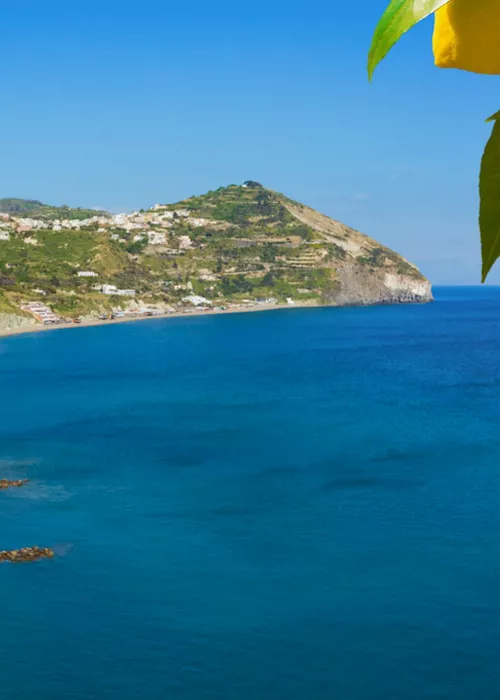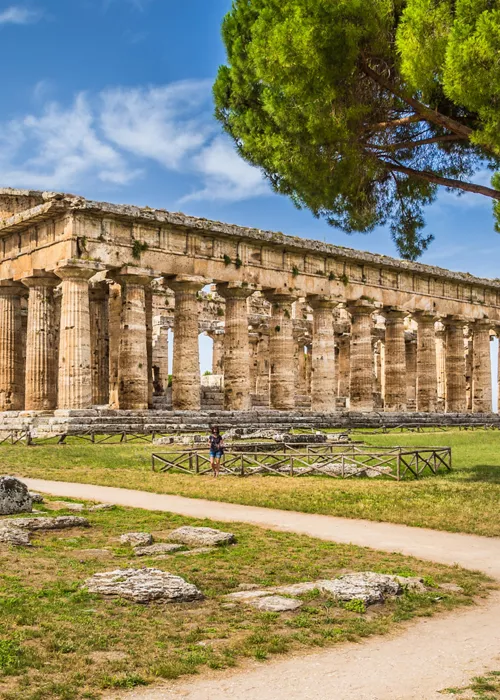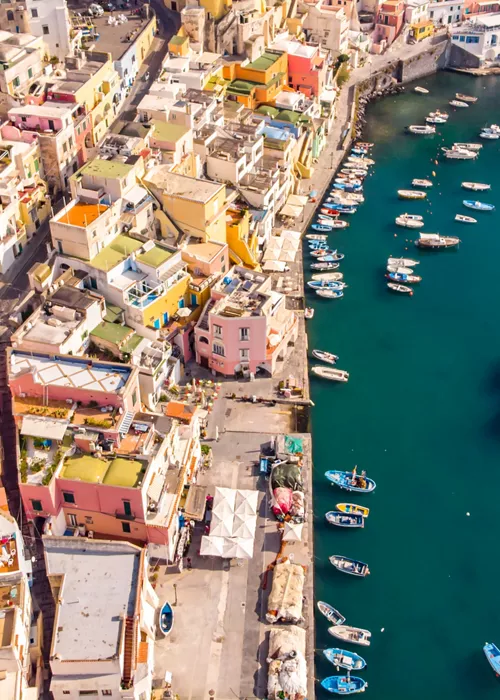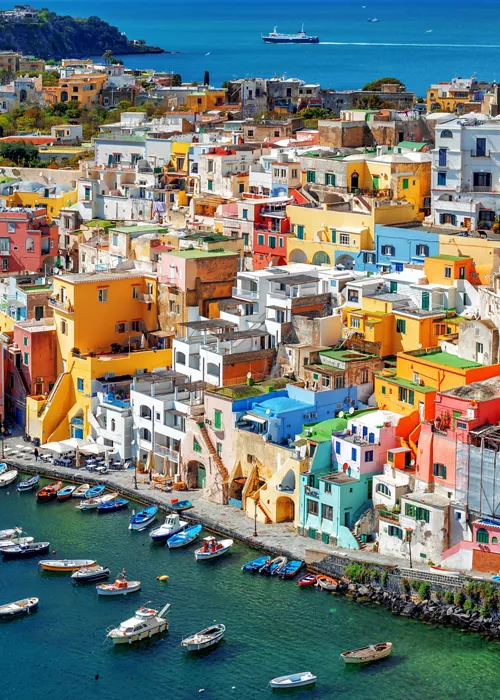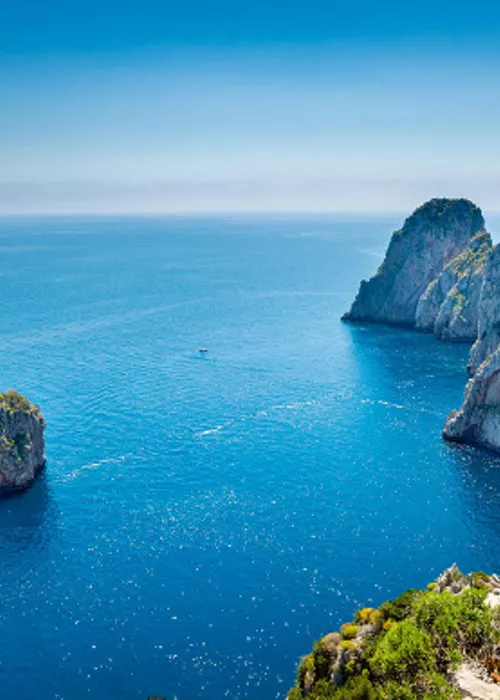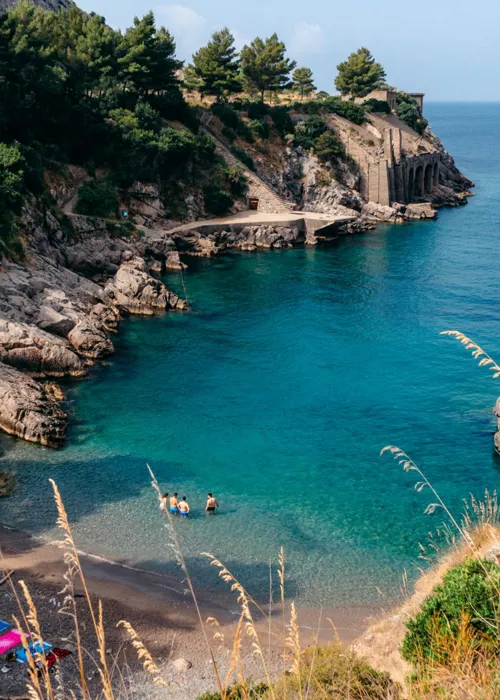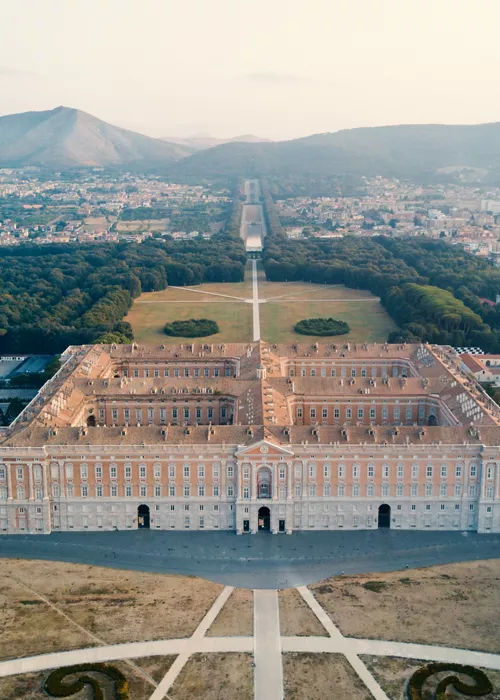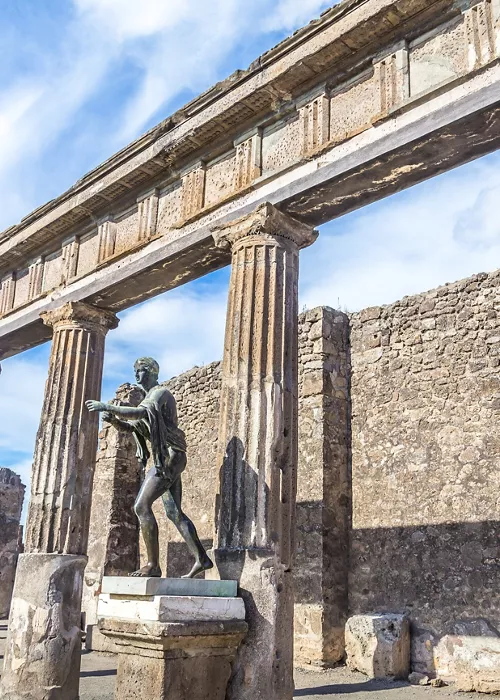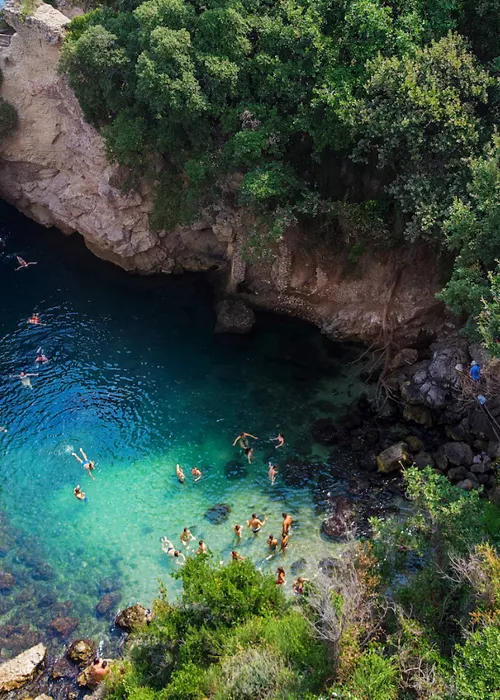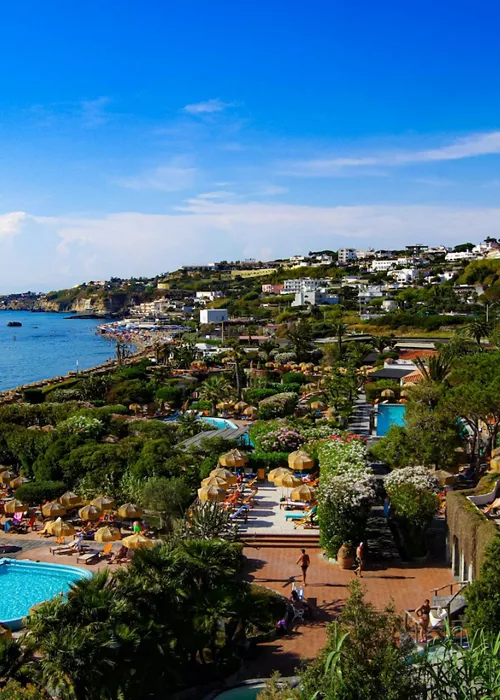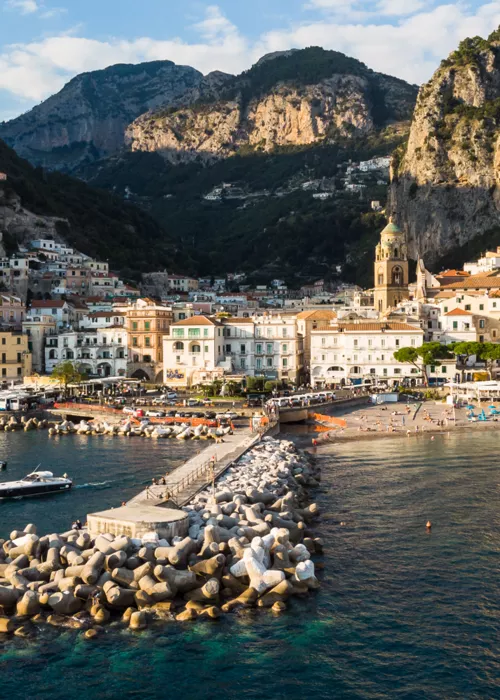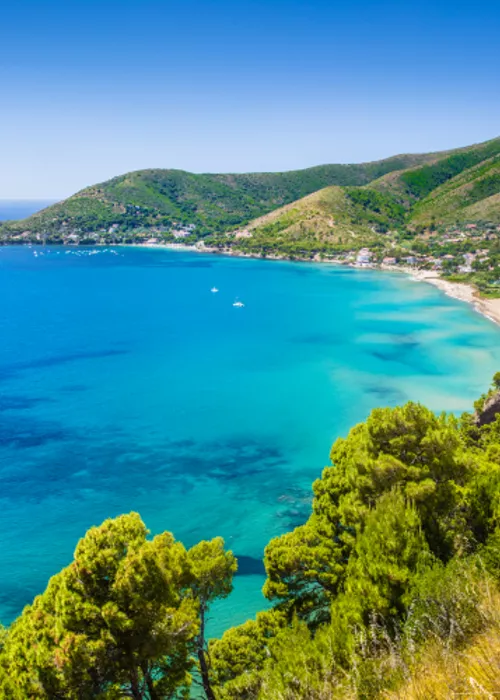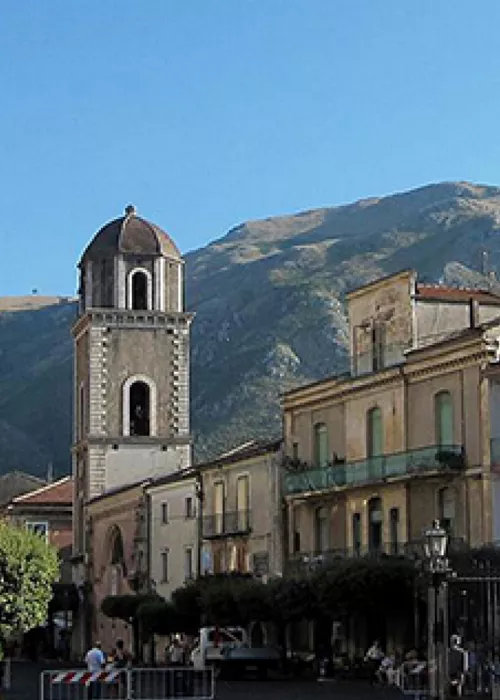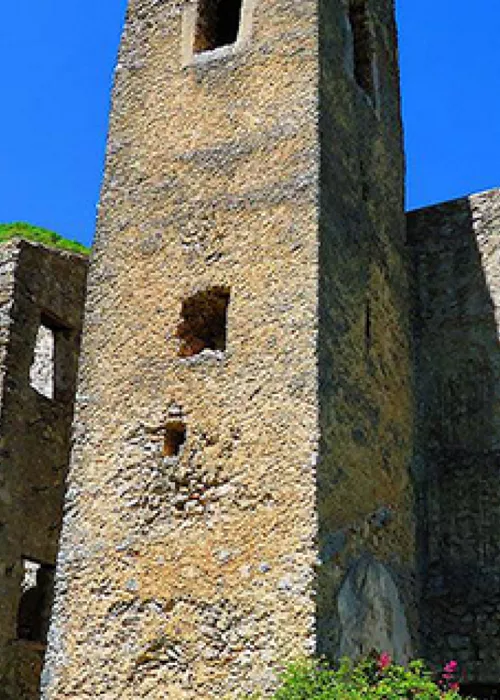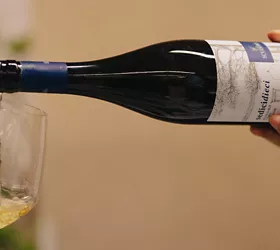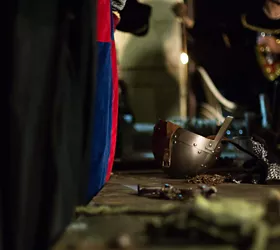Vietri sul Mare, a sparkling ceramic town on the Amalfi coast.
Whether you are a ceramics enthusiast or not, the minute you set foot in Vietri sul Mare, you cannot help but be dazzled by the colours of its majolica tiles that draw a shimmering mosaic and light up the entire village, from the historical monuments to the squares and courtyards.
Yet it is not because of its famous ceramics that Vietri sul Mare is called the 'first pearl of the Amalfi Coast', but because of its strategic position in the area, i.e., the one furthest to the east, the very first stop on this magical stretch of the Campania coastline coming from Salerno.
A colourful country
Blue and yellow will be the colours that will be immediately imprinted on your eyes, even from a distant point. These are the colours of the majolica tiles adorning the dome of Vietri sul Mare Cathedral dedicated to Saint John the Baptist and located at the highest point of the historic centre along a panoramic terrace.
Ceramics is a theme that you’ll constantly find at every corner. You will find them in another religious building, right next to the cathedral: the 17th-century Arciconfraternita dell'Annunziata e del Rosario. Cladded in majolica are the three façade panels, as well as ceilings and flooring.
It is again the polychrome majolica tiles that stand out at the Villa Comunale, a surprising place often compared to Gaudí's Parc Güell in Barcelona. Walls, avenues, fountains and the sinuous handrails of the paths are a riot of majolica mosaics, red, yellow, blue and dove-grey tiles. You are right inside a joyous explosion of colours, while below the blue expanse of the Tyrrhenian Sea and the coastline of the Gulf of Salerno.
Here you will find nothing but unique pieces
Stroll through the alleys of Vietri sul Mare, admire the hundreds of compositions that adorn the village of Etruscan-Samnite origin and visit any of the countless shops.
Whether you shop or not, you will still come away enchanted because the masters will welcome you with a great sense of hospitality, eager to tell you the centuries-old history of the art of Vietri ceramics, a tradition that began in the Renaissance. You will amazed by the clay cooking process and the hand-painting of what are always and only unique pieces: vases and tableware, decorative paintings depicting landscapes, in an infinity of artefacts in contrasting colours.
Pantone “Vietri yellow”
If you do go shopping, don't forget to favour yellow, in a unique shade that they know how to reproduce only here, so well that it is known worldwide as “Vietri yellow”. The bright light of the Mediterranean makes it stand out in all its beauty.
Among the subjects, the typical Vietri one is the donkey, mainly in emerald green, a theme that goes back to the 19th century. A statuette reproducing the animal will be a nice souvenir, a symbol of the entire Amalfi Coast, which once was a means of locomotion along the mule tracks for transporting men and goods.
If curiosity drives you to learn more about this art, Vietri boasts three exhibition spaces dedicated solely to ceramics: the Provincial Ceramics Museum in Villa Guariglia, the Cargaleiro Museum and the Solimene Ceramics Palace.
Fine sand and shallow waters
The Marina di Vietri offers a stretch of coastline characterised by fine golden sand and a shallow and gently sloping seabed, an ideal setting for families with children and the elderly. You can opt for the free beach or the beach equipped with every comfort of the resorts.
Nearby you will also find the La Crestarella beach dominated by the so-called tower, the Schiarata and the Cancelluzzo Beach: the latter is free, with pebbles mixed with sand, and can only be reached by sea, which you can do by hiring a pedalo from Marina di Vietri.
Two out-of-town trips
There are two recommended visits if you travel a little further from Vietri sul Mare.
Go to Albori which has two quiet little beaches in its inlet, not very popular since you have to walk down 200 steps. The water is crystal clear and a small stream flows into the sea at this very spot. Two beach clubs and a refreshment stand will be useful for equipment and refreshment. When the sun sets behind the rock, climb up towards the fishing village, delightful with its whitewashed houses and the scent of lemons as you walk.
Raito is famous for its stairways, the only way to get around this scenic village. Visit the Villa Guariglia with its Museo Provinciale della Ceramica (Provincial Museum of Ceramics) and surrounded by a marvellous terraced park, as is typical on the Amalfi Coast, where vegetation is wrested from the sea and rock with a skilful technique.




